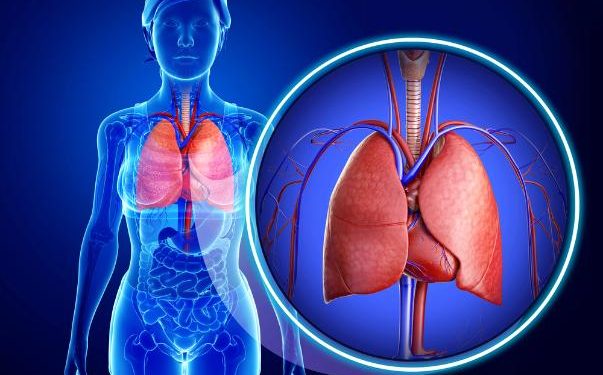Most cancer is described in terms of stages. These stages are usually grouped numerically from 0 to 4, and they offer information about the size of the cancer, where it is located, and how far it has spread.
Staging is based on physical exams, imaging scans and other tests. Your doctor will use the results of your staging to decide on your treatment options.
Lung Cancer
Lung cancer arises in the lungs, where abnormal cells divide uncontrollably. They can form masses that keep the lungs from working properly. Typically, the cells that develop into lung cancer start in the bronchi or bronchioles or in the small air sacs (alveoli). Some types of lung cancer also spread to other areas of the body after developing at the initial site. This is known as metastasis. Generally, the National Cancer Institute classifies stage 4 cancers as those that have spread to distant locations.
Lung tumors can often grow very large before they cause any symptoms. However, sometimes early warning signs can signal the presence of a tumor. These include a persistent cough, difficulty breathing or chest pain that gets worse when laughing, coughing or deep breathing. Another symptom is coughing up blood or blood-tinged mucus.
Cancers that have spread to the brain may also produce neurological changes, including headaches. In some cases, the tumors may obstruct the flow of air through the lungs and result in wheezing.
Because of the late stage at which most lung cancer is diagnosed, many patients don’t receive a diagnosis until they have reached stage 4. If your doctor suspects that you have lung cancer, they may perform imaging tests to look for an abnormal mass or area. An X-ray or an CT scan can show the presence of a tumor, while MRI and PET scans produce more detailed images.
If a tumor hasn’t spread, your doctor may decide to treat the lung cancer itself. This may involve surgery, chemotherapy or radiation. If the cancer has spread, your doctor may suggest a different treatment plan, depending on which organs are affected.
Some patients may be able to participate in clinical studies of new lung cancer treatments, even if they have advanced disease. This is a great opportunity to try cutting-edge therapies that aren’t yet available to the general population. Talk with your physician to learn more about how you can help your family through a lung cancer diagnosis. They may refer you to a specialist, such as an oncologist or pulmonologist, for more specialized care.
Bone Cancer
This rare type of cancer develops in bone tissue. Its most common forms are osteosarcoma, Ewing sarcoma and chondrosarcoma. It may also occur in soft tissue around the bones.
Doctors categorize tumors based on their size and whether they have spread (stage). The staging of a bone cancer helps doctors decide how to treat it.
Osteosarcoma and Ewing sarcoma can begin in any bone in the body, but they most often affect the long bones of the legs and arms. Bone cancer symptoms may include pain that comes and goes or gets worse with movement, swelling of the bone, and fatigue.
If the tumor is in a bone that holds a lot of blood, doctors may also look for signs of bleeding within the bone. X-rays, CT scans and magnetic resonance imaging (MRI) can help doctors see inside the bone. They may also use a type of nuclear medicine called radionuclide bone scanning to show where the cancer is in the bones.
People with stage 1 bone cancer have a low-grade tumor that has not spread beyond the original area in one bone. The outlook for these patients is excellent.
In stage 2, a high-grade tumor has developed in more than one place in the same bone but has not yet spread to the lungs or lymph nodes. A person in this stage has a poorer outlook for survival.
If a bone cancer has spread to the lungs or lymph nodes, it is in stage 4. The prognosis is less good for this type of cancer than for primary bone cancer that has not spread.
Many people with bone cancer are successfully treated and their cancer does not return. Others will need radiation or chemotherapy to keep the cancer from spreading. These treatments can go on indefinitely to prevent cancer from returning or growing again. It is important to follow up with your healthcare provider regularly. This way, if cancer does return or grow, it can be caught and treated early.
Brain Cancer
Brain tumors happen when cells in the brain or near the brain grow out of control. Sometimes they’re caused by changes in a person’s DNA that make cells grow faster or keep them from dying as they should. Other times, they’re caused by abnormal cell growth that occurs because of certain genetic conditions like neurofibromatosis, von Hippel-Lindau disease or Li-Fraumeni syndrome.
Symptoms of brain cancer depend on the type, size and location of the tumor. Some brain tumors are non-cancerous, and these usually don’t produce symptoms. Others, such as meningiomas, astrocytomas and medulloblastomas, are cancerous. They can cause symptoms such as headaches, seizures and changes in memory and thinking.
When a tumor causes symptoms, the most common are headaches. They can be mild or severe. They can also be accompanied by vomiting and nausea, or a feeling of pressure in the head or on the forehead. Other symptoms include a loss of balance or vision problems, weakness on one side of the body, problems with swallowing, slurred speech and a change in personality.
The signs and symptoms of a brain tumor can be similar to those of other illnesses, so it’s important to see your healthcare provider if you notice any unusual or persistent symptoms. Your provider can order tests to diagnose a brain tumor. They can include a spinal tap (lumbar puncture). This involves removing cerebrospinal fluid from around your spine for testing in a laboratory. The test looks for substances that cancer cells release and for gene abnormalities that are characteristic of brain tumors.
If the tumor is found to be cancerous, treatment may include surgery, radiation and chemotherapy. Palliative care can help with managing pain and other symptoms.
Lymphoma
Lymphoma is an umbrella term for dozens of different cancers that start in the immune system. It usually starts when infection-fighting white blood cells, called lymphocytes, develop a genetic mutation. They multiply too quickly and grow out of control, crowding out healthy cells and causing the lymph nodes, spleen and liver to swell. Lymphoma may also spread to other parts of the body.
Doctors don’t know what causes it, but they do know that the disease is not contagious and that it does not spread through the bloodstream or bone marrow like leukemia. It can affect people of all ages but is most common in those over 55. Hodgkin and non-Hodgkin lymphoma are the most common types of this disease, but other forms exist.
It’s important to see your doctor if you have any of the symptoms of lymphoma, even if they don’t seem serious. The key is getting a diagnosis before the cancer spreads too far.
Before a patient receives a lymphoma diagnosis, they will typically have experienced many of the same symptoms as someone with a cold or the flu. It’s common for them to misinterpret the initial signs as being normal, especially if they have been occurring over an extended period of time.
To diagnose lymphoma, your doctor will examine you and run blood tests and X-rays to determine if your lymph nodes are enlarged or if the disease has spread to other organs. A biopsy will be needed to confirm the diagnosis. Treatment options for lymphoma depend on the type of cancer, how far it has spread and your age.
Often, doctors prescribe chemotherapy to kill cancerous cells and prevent them from spreading. They may also use radiation therapy, targeted therapy or biologic therapy to boost the body’s natural ability to fight the disease.
During treatment, it’s important to eat well. A dietitian can help you plan a diet that will provide the nutrition you need to stay strong during treatment. Be sure to get enough exercise, too. This can help ease fatigue and reduce stress. It’s also a good idea to avoid asking your patients personal questions about their lab results or how long they have left to live.









